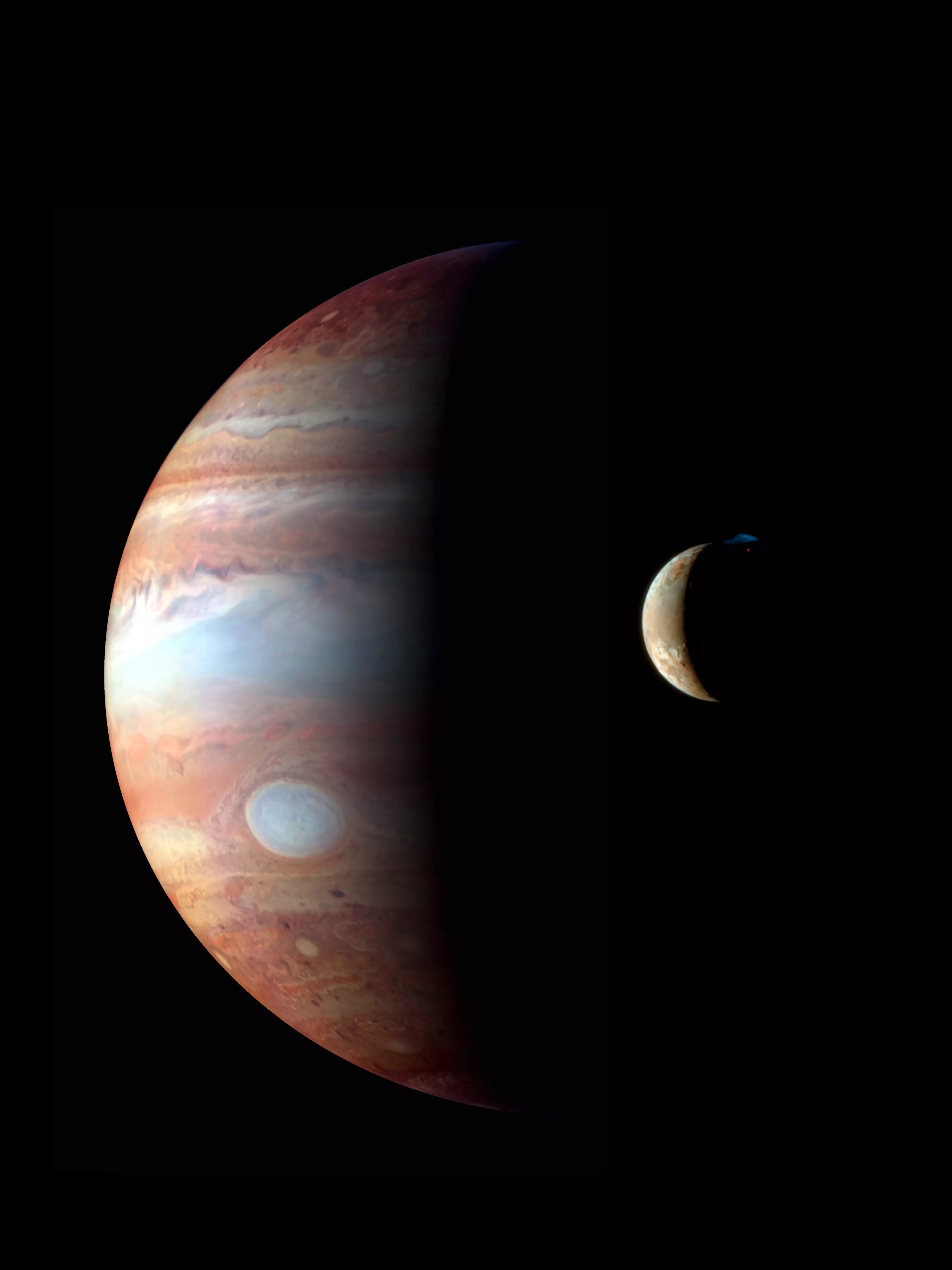
Winds on Jupiter can hit a mind-blowing 900 miles per hour (1448kph) - making them three times as fast as those during the strongest tornadoes on Earth.
A new study conducted by astronomers from Laboratoire d'Astrophysique de Bordeaux looked at the molecules left behind by the Shoemaker-Levy 9 comet, which hit Jupiter in 1994.
Advert
By looking at these molecules, the scientists were able to determine that winds on the planet can reach 900mph with storms wider than the Earth and topping 560 miles (900km) in height.
Not the ideal place for an intergalactic holiday, then.
For context, storms on Earth normally cover an area of up to three miles (4.8km) and can hit speeds of around 250 miles per hour (402kph).
The study's author Dr Thibault Cavalié said: "The most spectacular result is the presence of strong jets, with speeds of up to 400 metres per second, which are located under the aurorae near the poles.

Bilal Benmahi, who also worked on the study, added: "Our detection indicates that these jets could behave like a giant vortex with a diameter of up to four times that of Earth, and some 900 kilometres in height.
Advert
"A vortex of this size would be a unique meteorological beast in our Solar System."
The research has been published in a paper entitled 'First direct measurement of auroral and equatorial jets in the stratosphere of Jupiter'.
Last year, images taken by NASA and ESA's Hubble telescope showed a huge storm raging on Jupiter.
Sharing the footage, NASA explained it showed a 'bright, white, stretched-out storm moving at 560 kilometres per hour' (374mph).
Advert
While storms in that region are fairly common, researchers reckoned that one may have been a bit different as it could have formed a permanent feature.
A statement from ESA and NASA read: "Researchers speculate this may be the beginning of a longer-lasting northern hemisphere spot, perhaps to rival the legendary Great Red Spot that dominates the southern hemisphere."

The images also revealed that the Great Red Spot is currently 'an exceptionally rich red colour, with its core and outermost band appearing deeper red'.
Advert
Researchers say that the Great Red Spot is actually shrinking, although it still measures a whopping 9817 miles (15,800km) across.
So basically, it's big enough to swallow up the entire planet Earth.
Yep, that's pretty damn big.
Featured Image Credit: NASA/ESATopics: Interesting, space